-
Product Name
SGK1 antibody
- Documents
-
Description
SGK1 Rabbit Polyclonal antibody. Positive IP detected in HEK-293 cells. Positive WB detected in HEK-293 cells, HepG2 cells, Jurkat cells, NIH/3T3 cells. Positive IHC detected in human pancreas tissue, human breast cancer tissue. Positive IF detected in HEK-293 cells. Positive FC detected in HeLa cells. Observed molecular weight by Western-blot: 50-85 kDa
-
Tested applications
ELISA, WB, IHC, FC, IF, IP
-
Species reactivity
Human, Mouse; other species not tested.
-
Alternative names
SGK antibody; SGK1 antibody
-
Isotype
Rabbit IgG
-
Preparation
This antibody was obtained by immunization of SGK1 recombinant protein (Accession Number: NM_005627). Purification method: Antigen affinity purified.
-
Clonality
Polyclonal
-
Formulation
PBS with 0.02% sodium azide and 50% glycerol pH 7.3.
-
Storage instructions
Store at -20℃. DO NOT ALIQUOT
-
Applications
Recommended Dilution:
WB: 1:200-1:2000
IP: 1:200-1:2000
IHC: 1:20-1:200
IF: 1:10-1:100
-
Validations

HEK-293 cells were subjected to SDS PAGE followed by western blot with Catalog No:115166(SGK1 antibody) at dilution of 1:800
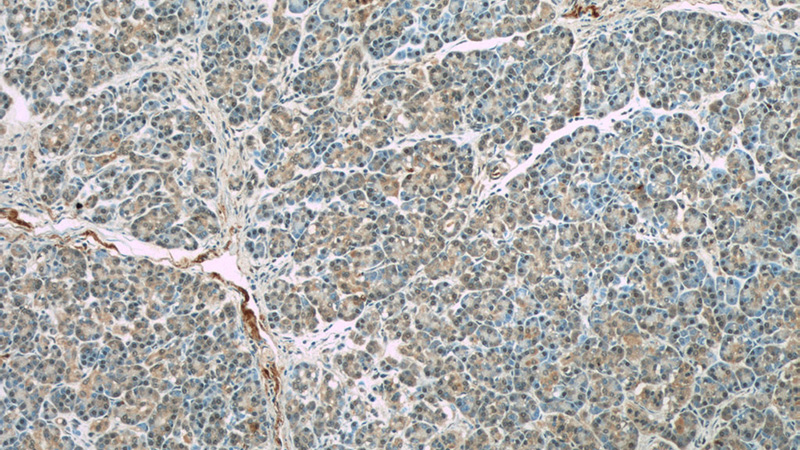
Immunohistochemistry of paraffin-embedded human pancreas slide using Catalog No:115166(SGK1 Antibody) at dilution of 1:50
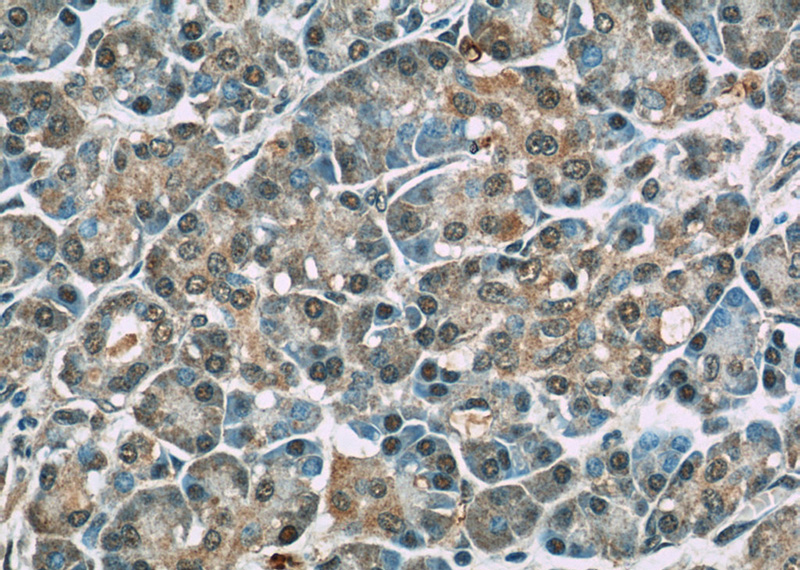
Immunohistochemistry of paraffin-embedded human pancreas slide using Catalog No:115166(SGK1 Antibody) at dilution of 1:50
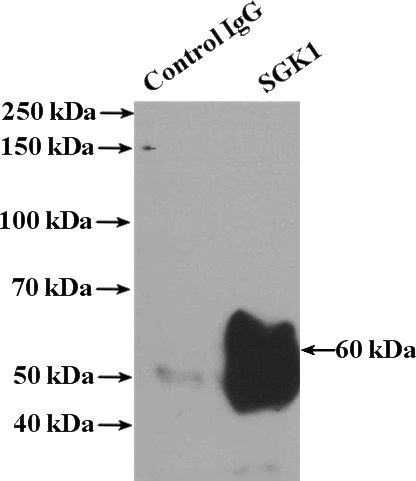
IP Result of anti-SGK1 (IP:Catalog No:115166, 4ug; Detection:Catalog No:115166 1:600) with HEK-293 cells lysate 1480ug.
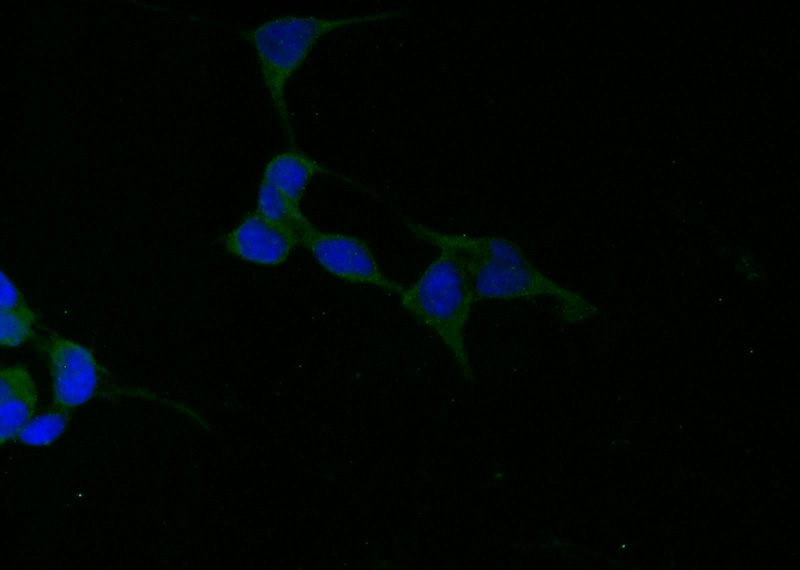
Immunofluorescent analysis of HEK-293 cells using Catalog No:115166(SGK1 Antibody) at dilution of 1:25 and Alexa Fluor 488-congugated AffiniPure Goat Anti-Rabbit IgG(H+L)
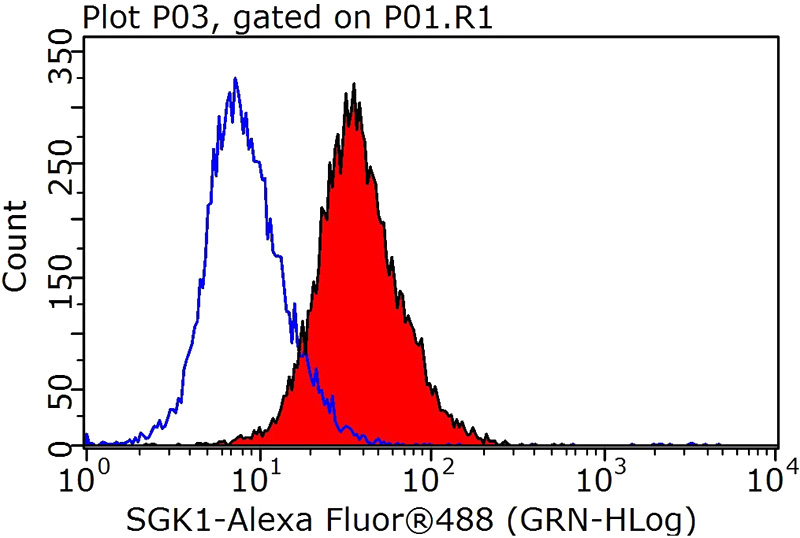
1X10^6 HeLa cells were stained with 0.2ug SGK1 antibody (Catalog No:115166, red) and control antibody (blue). Fixed with 90% MeOH blocked with 3% BSA (30 min). Alexa Fluor 488-congugated AffiniPure Goat Anti-Rabbit IgG(H+L) with dilution 1:1000.
-
Background
Serum- and glucocorticoid-induced kinase 1 (SGK1),also named as SGK, is a S/T protein kinase that belongs to the AGC (cAMP-dependent, cGMP-dependent, and protein kinase C) kinase family. It is expressed in many cell types and participates in numerous cellular processes and it is ubiquitinated and degraded at the ER membrane(PMID: 16847254). The N-terminal motif of SGK1 is critical for its ubiquitination and degradation(PMID:16817852 ). SGK and Akt are likely to phosphorylate related substrates, as they share a similar consensus phosphorylation site (RXRXXS/T)(PMID:11154281). It has 5 isoforms produced by alternative promoter usage and alternative splicing. This antibody is speicif to SGK1.
-
References
- Zhou H, Gao S, Duan X. Inhibition of serum- and glucocorticoid-inducible kinase 1 enhances TLR-mediated inflammation and promotes endotoxin-driven organ failure. FASEB journal : official publication of the Federation of American Societies for Experimental Biology. 29(9):3737-49. 2015.
Related Products / Services
Please note: All products are "FOR RESEARCH USE ONLY AND ARE NOT INTENDED FOR DIAGNOSTIC OR THERAPEUTIC USE"
